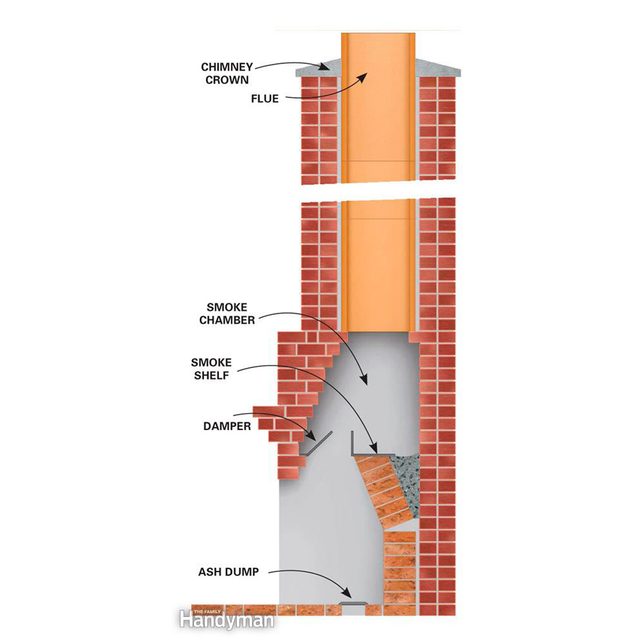Elevate Your Home's Safety and security with Proven Chimney Maintenance San Jose Approaches
Elevate Your Home's Safety and security with Proven Chimney Maintenance San Jose Approaches
Blog Article
Specialist Tips for Effective Smokeshaft Upkeep You Need to Know
Smokeshafts offer as important parts in lots of homes, offering warmth and convenience. From the importance of normal examinations to safe functional techniques, a comprehensive strategy to smokeshaft upkeep is crucial.
Value of Normal Inspections
Regular assessments of chimneys are important for guaranteeing their security and capability. Smokeshafts play an essential duty in venting out dangerous gases and keeping correct air movement in a home. In time, creosote build-up, debris, and architectural damage can occur within the chimney, presenting significant risks such as smokeshaft fires or carbon monoxide gas leakages.
During a chimney inspection, trained professionals evaluate the problem of the smokeshaft, looking for any kind of indications of damage, obstructions, or wear and tear. They additionally inspect the integrity of the flue, smokeshaft lining, and smokeshaft cap to guarantee everything remains in proper functioning order. By identifying and resolving issues early, costly fixings or potential dangers can be avoided.
Regular evaluations not just assist in maintaining the security of the chimney however additionally contribute to its general performance. A well-kept and clean smokeshaft runs better, making sure correct ventilation and lowering the danger of interior air contamination. Scheduling yearly chimney evaluations is a proactive action that homeowners can take to protect their residential or commercial property and loved ones.
Cleaning Strategies and Regularity
Keeping the security and performance of a chimney involves not just routine evaluations however also applying suitable cleaning techniques and figuring out the optimal frequency for cleaning. Chimneys ought to be cleansed by a specialist chimney move at the very least yearly, even if they are not often used. If the smokeshaft is made use of regularly, especially with wood-burning cooktops or fireplaces, it may require even more frequent cleanings to protect against the accumulation of creosote, a highly flammable material that can lead to smokeshaft fires.
Homeowners should never overlook chimney cleansing, as it is important for keeping a practical and safe smokeshaft system. Regular cleansings not only reduce the danger of smokeshaft fires yet also enhance the smokeshaft's overall performance and long life.
Attending To Chimney Leaks

When attending to smokeshaft leaks, comprehensive assessment and timely fixings are essential to stop water damage and preserve the structural honesty of the smokeshaft. Leakages in a smokeshaft can bring about major issues such as mold development, damage of the chimney framework, and also potential fire threats. To effectively address chimney leakages, beginning by evaluating the chimney cap, crown, flashing, and stonework for any type of indicators of damage or wear. Chimney caps must be safely in area to avoid water from going into, while the crown and flashing ought to be intact and properly secured. Any type of splits or gaps in my blog the masonry ought to be repaired quickly to stop water seepage. Additionally, think about waterproofing the chimney to give an extra layer of security against moisture. Routine upkeep and assessments can help deal with and identify chimney leaks early, saving you from pricey repair work and making sure the safety and security and durability of your chimney.
Understanding Creosote Build-Up
To understand the potential risks of creosote accumulation in chimneys, it is necessary to recognize its development process and effect on smokeshaft performance. Creosote is a brownish or black tar-like substance that builds up inside smokeshaft systems when timber or nonrenewable fuel sources are melted. As smoke climbs with the chimney, it cools down and condenses, resulting in the development of creosote, which follows the smokeshaft walls.

Regular chimney evaluations and cleanings by a specialist chimney sweep are important in avoiding creosote build-up and ensuring the secure operation of your smokeshaft system.
Safe Procedure Practices
Applying proper safety protocols is important for the safe and secure and reliable procedure of smokeshaft systems. Always make sure that the smokeshaft is properly checked and cleaned consistently to eliminate any creosote buildup, which can lead to chimney fires.
Additionally, ensure to just shed skilled wood in your fireplace, as eco-friendly or wet timber can create more creosote and create hazardous smokeshaft obstructions. Never ever leave a fire unattended and constantly make sure the fire is totally extinguished prior to going to bed or leaving the house. By following these secure operation practices, you can take pleasure in a warm and cozy fire while guaranteeing the safety of your home and enjoyed ones.
Final Thought
Finally, maintaining your chimney is vital for guaranteeing its safety and security and effectiveness. Regular evaluations, correct cleansing strategies, attending to leakages, taking care of creosote accumulation, and see adhering to secure procedure practices are essential elements of smokeshaft maintenance. By remaining on top of visit their website these jobs, you can protect against prospective hazards and prolong the life-span of your chimney. It is very important to focus on chimney maintenance to maintain your home safe and cozy during the colder months.
Over time, creosote build-up, debris, and architectural damages can occur within the smokeshaft, presenting significant risks such as chimney fires or carbon monoxide leaks.
If the smokeshaft is used regularly, particularly with wood-burning ovens or fire places, it may require even more frequent cleansings to avoid the buildup of creosote, a highly combustible material that can lead to chimney fires. (Chimney Maintenance San Jose)
To comprehend the possible risks of creosote build-up in chimneys, it is crucial to recognize its development procedure and effect on smokeshaft efficiency. As smoke climbs with the chimney, it cools down and condenses, leading to the formation of creosote, which adheres to the smokeshaft walls.
Always make sure that the chimney is skillfully examined and cleaned consistently to eliminate any kind of creosote build-up, which can lead to smokeshaft fires.
Report this page